January 2022 Vol. 77 No. 1
Features
2022 Utility & Communications Construction Outlook, Update
By Daniel Shumate, Managing Director of FMI Capital Advisors Inc.
Uncertainty felt like the only certainty over the past year as the industry performed quite well despite labor, material, COVID delta variant and regulatory challenges that were on the minds of every contractor. With the passage of the Infrastructure Investment and Jobs Act that has been a topic of discussion for almost 10 years, optimism around the underground markets is nearing all-time highs. Approximately half of the bill is spending on infrastructure that the Federal Government would do in any given year; however, over $550 billion in new spending is expected to occur under the act. Spending on power infrastructure, high-speed internet, clean drinking water and resilient infrastructure will all benefit the underground construction segment.
New construction put-in-place in the U.S. market is forecast to grow 3 percent in 2021 on the strength of the residential sector. Millennials have begun to buy single family homes due to the extended working from home and growth in families and were the driving force behind the sector in 2021. In 2022, the water, wastewater, communication and power segments are all expected to see increases in construction put-in-place. The largest challenges for the construction industry will be tied to the commercial building markets. Meaningful declines in spending on commercial building will limit the total growth of the construction segment and could impact some of the underground work that would support this type of construction.
Within the utility and communications segments, capital plans by owners of power, gas and communication infrastructure continue to grow. The two themes that are most common amongst investor-owned utilities and municipalities that will define 2022 are resiliency and renewables. Spending tied to the hardening of the grid, the resiliency of our water supply, and the real-time awareness of grid issues are key areas of investment for utilities. Additionally, the continued push at the Federal and state level to increase renewable generation as a percentage of energy supply will impact the power and gas markets.
With the amount of spending on utility-related infrastructure expected to grow again in 2022, one pressing question remains, who will do the work? Creativity abounds around this challenge. Growth of technical schooling, automation of tasks and a generation that is waking up to the challenges of student debt are all positive trends for the industry. However, competent, productive crews require years of training and experience, and companies will struggle to keep pace with the volume of work that will be required in the power, communication and water segments.
Both inflation and its cure (tightening of monetary policy and raising interest rates) will make an impact on both the stock market and the underground construction industry. Contractors will feel tightening profitability due to labor costs, material costs (and availability) and equipment costs throughout the year. Owners are actively developing strategies to ensure their employees have sufficient supplies and equipment to address their customer demand. This would have been unheard of in 2019. The cure for inflation will also be challenging for utilities and municipalities alike. The cost to finance projects to repair our infrastructure and build a grid centered on clean energy will increase, and the burden to the average induvial through tax increases or rate base increases may slow infrastructure progress.
Power distribution
The power distribution segment of underground construction will experience continued growth and investment in 2022. Two trends are driving the growth in this segment, and both will increase their pace under a new administration concerned about renewable energy: sustainability and resiliency. FMI projects that power distribution spending will grow 26 percent in the coming five years to repair existing infrastructure and to prepare for a more distributed generating environment. The South and West Regions of the United States are anticipated to have the greatest growth due to population trends and renewable generation concentration. Also, intense, and unpredictable weather events in 2021 point toward an increasing focus on utility resiliency strategies in 2022. The most common solution is the transition from overhead to underground infrastructure, which bodes well for underground contractors.
Another factor contributing to the growth in the segment is the increase in electric vehicles throughout the country. Electric utilities are deploying billions in capital to accelerate the charging infrastructure around the country. Over 22 million electric vehicles are expected to be on the road by 2030 and significant upgrades to the charging infrastructure are needed to support them.2
Natural gas transmission, distribution
The outlook for the natural gas transmission segment diverges meaningfully from the other underground services. The Biden administration has been very clear about their desire to shift from fossil fuels and expansion of new oil and gas transmission infrastructure will be limited. FMI expects repairs and improvements to existing infrastructure to have a stable outlook as demand for natural gas to heat homes and provide reliable power remains. Despite the need and the relatively low emissions from natural gas, the message from the Biden administration has been clear on this front and growth from large opportunities is not expected.
For the gas distribution contractor, repair and replacement will remain consistent at similar levels to 2021. North American gas local distribution companies continue efforts to remove cast-iron and bare steel in 20-year replacement programs. Nearly every LDC in the United States is under some form of accelerated replacement program with multi-year capital investments being made to address leak-prone infrastructure. However, some of the challenges the transmission industry is feeling on the regulatory side will impact distribution contractors as well. Democrats in the House of Representatives passed a methane tax that would create a fee for natural gas use. If the bill went into effect, it would raise the cost to heat homes and attempt to accelerate the change to electric HVAC, water heaters, ovens and stoves. Additionally, “No New Gas Main” legislation has occurred at the municipal levels in New York and California and could impact local contractors.
Communications infrastructure
The communication construction segment is knee-deep in the deployment of fiber to support the 5G rollout by major carriers around the country. Current expectations are that by 2025, over half of all mobile users will be relying on 5G connections. To facilitate this, micro cell deployment and the “densification” of the current network is a necessity. The underground segment will benefit as fiber is the backbone that makes the small cell network function. The emergence of 5G wireless technologies marks the next great shift in telecom infrastructure (i.e., from wireline to fiber). $45 billion dollars is also earmarked for fiber-to-the-home construction in rural and underserved markets in the infrastructure bill. Additionally, networks necessary for self-driving vehicles, grid hardening, and the internet-of-things will drive demand for increased fiber to support the complex data demand.
Water/wastewater
Investment in our nation’s water infrastructure took a defining step forward in 2021. Over $100 billion is directed at water resources and revitalized private sector interest could result in significant growth. Federal water infrastructure funding will be directed foremost into bolstering state revolving funds, accelerating lead line replacement, improving storage and resilience infrastructure for droughts, and addressing emerging contaminants. Real legal consequences for failure to maintain clean drinking water have resulted in a necessary emphasis on repairing those lines that need it most.
Growing population centers have struggled to keep pace with the growing volume of wastewater demand and those population centers are reactively working to catch up to prevent sewer overflows. Recently, an increase in the use of asset management plans enable utilities to proactively manage wastewater infrastructure maintenance rather than reactively respond to pipeline and equipment failures. The sector has made strides to address current and future needs through resilience-related planning and innovations that produce profitable byproducts or cost savings from wastewater treatment.
The information presented creates an interesting dynamic for the wet utility contractor. The ASCE continues to give “D’s” for the sewer and stormwater infrastructure markets, and the urgency to repair infrastructure at the municipal level was often tied to EPA enforcement activities. Conversely, the availability of funding and the creative contract structures allowing for increased annual maintenance should result in strength growth for the wet utility contractor.
UCCI performance & updates
The Utility & Communications Construction Index (“UCCI”) presented below presents the stock performance of the sector’s publicly traded stocks over the past year (FIGURE 2), the past three years (FIGURE 3), and the past five years (FIGURE 4). The UCC Index has not changed this year, but Orbital Energy Group has completed a few acquisitions in the segment and as the near critical mass will be added to the index. The YTD performance of the UCCI is up over 40 percent on the year because the expectation of an infrastructure bill was finally met. This outpaced the S&P 500, which was up over 29 percent year-to-date. Market expectations for revenue and earnings growth continue to rise.
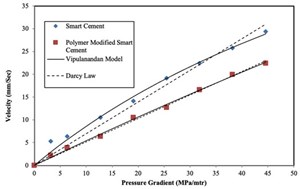
The 3-Year UCC Index tells the tale of COVID all too well. The companies in the UCCI were performing consistently, but they were not outperforming the S&P 500 leading into the pandemic. The initial stock declines in the UCCI were incredibly steep because the market had the perception that profit in most of these companies was tied to the price of oil. As we discussed back then, the perception was flawed, and the market saw revenue and profit increase with productivity gains in 2019 and expectations of sizeable investment in U.S. infrastructure in 2021. The market learned that these companies are much more dependent on the investments of investor-owned utilities than the whims of oil pricing.
The 5-year UCC Index in FIGURE 4 is meaningful because it illustrates the relative volatility of the past two years compared to the two years prior. While the segment performed well during the Trump administration, the anticipation of substantial infrastructure investments in the segment have raised expectations to all-time highs for the UCC companies.
Mergers & acquisitions
2022 was one of the hottest mergers and acquisitions markets on record before entering the fourth quarter and the volume of transactions increased over this period. The specter of a potential increase in capital gains saw owners considering whether it was the appropriate time to sell. Couple potential tax increases with the stress of managing a company through the pandemic and many owners answered “yes.” The type of acquisition activity in 2021 shines a spotlight on the direction that many players in the utility construction industry are placing their bets. The shift toward renewable energy was seen in the acquisition of Blattner by Quanta, the communication and grid hardening trends were seen in the acquisition of Future Infrastructure by Primoris, and the repair of the electrical distribution grid and expansion of electrical transmission are seen in Centuri’s acquisition of Riggs Distler and Orbital Energy Group’s acquisition of Frontline Power Construction. •
1 FMI 4Q Outlook 2021
2 See https://www.eei.org/issuesandpolicy/electrictransportation




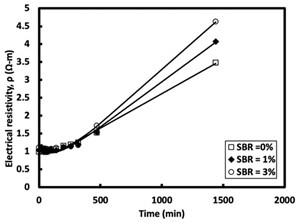
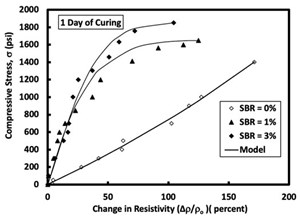
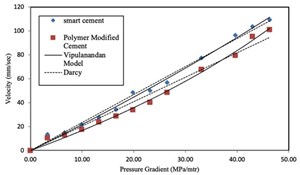
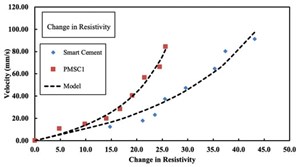

Comments